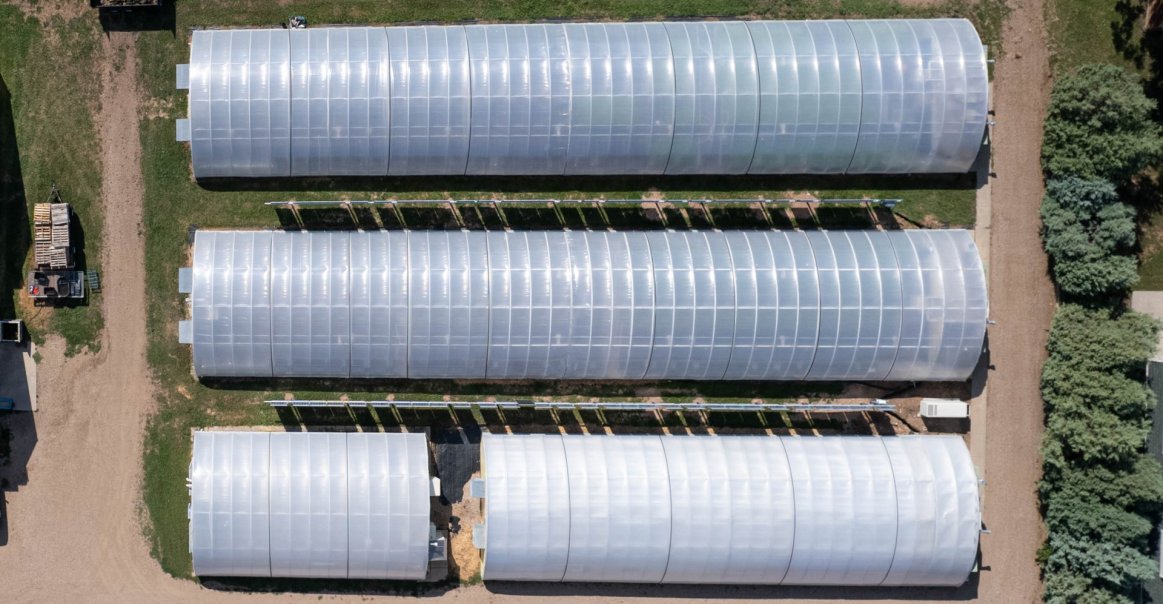




Spring Hill Greens is a local farm in Fort Collins, CO that grows microgreens, baby greens, and baby herbs while striving for carbon neutrality. The owners desired an extensive solar system to generate enough clean power to support their entire property. However, Spring Hill Greens would require more land to support a conventional ground-mount solar array, requiring an innovative agrivoltaic solution.
Spring Hills Greens, Sandbox Solar, and Greentech Renewables Denver constructed a custom 26 kW DC bifacial solar fence to meet the farms' energy needs while optimizing their land use. The installer incorporated bifacial solar fences between greenhouses that would otherwise go unused.
The inherent challenge Sandbox Solar encountered during the design process was due to spacing and angles. A standard solar fence angled towards solar south would not fit in the available space, but a vertical solar fence was a viable solution. The installation team took advantage of the greenhouses' UV reflective film coverings, which protect the greens from excessive sun exposure. The installation used Canadian Solar 445W BiHiKu bifacial panels, SolarEdge 11.4kW 240V 1-Phase inverters, SolarEdge P505 Rail Mounted optimizers, and custom-designed Tamarack bifacial vertical solar fence solar racking.
Sandbox Solar used SPADE Agrivoltaic Design Software, a tool that optimizes solar land use, to design and simulate the agrivoltaic system and evaluate how the system would fit the owner's needs. As a result, Spring Hill Greens is now producing enough energy to power its entire farm.
For any questions about agrivoltaics or the production efficiency of this project, reach out to Sandbox Solar and inquire about their Fort Collins bifacial fence array.
Fort Collins, CO 80521
United States




Comments
Would Spring Hill Greens or Sandbox Solar be willing to share the production data? I'm curious to see how it would compare to a traditional south facing ground mount
Hi Bob! Sandbox Solar does not host a webpage with data directly accessible to the public, however, they have gathered the following production data from Sept. 2022 - April 2023 to help paint a picture of how this system compares to a tradition ground mount.
Thus, a typical ground mount is still more efficient if one has the space and option. A vertical bifacial racking system, however, has the potential to outproduce E/W racking systems and save dramatically on footprint and usable area.
The vertical bifacial systems have an interesting yield curve that is opposite of the duck curve and may be strongly considered as an option for solar developments in the future. Evening production is greater and can provide benefits to customers in TOU/TOD rate schedules. I've attached data graphics for the vertical bifacial fence and a nearby south-facing ground mount along with a sunny day yield curve for your reference.
Reach out to us if you have any other questions!
Sunny day yield curve:
Vertical bifacial fence production data:
South facing ground mount production data for comparison: